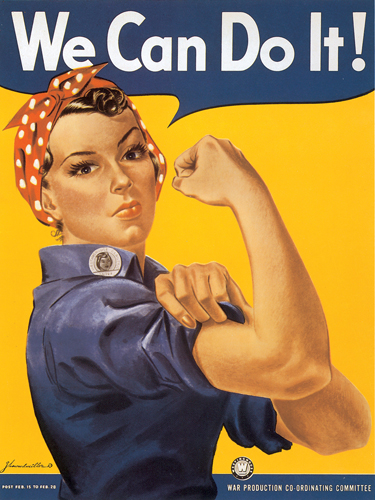The first thing that i found when researching costumes was a girl aged around 5 years old wearing what a typical evacuee would wear once they had been sent off; which included the name tag they would have worn so that when they reached their destination it was easy to locate them to their right carer as well as a cardboard box as a bag which represents that the working class did not have much money and as the government started to downfall so did the whole country with money, which is why they produced ration cards-which should be part of this outfit or maybe just an adults one- so that people could only buy a selected amount so that they country would not run out. As well as the hat which was the typical hat worn around the 1920-1940's as it was the fashion.
The next outfit i found was a youngish women who was wearing the outfit of what the most well known propaganda sign 'we can do it' wore; a bandana with a working jump suit. The use of the woman tensing her muscles opposed to the stereotypical woman before the war started as they were seen to be in the domestic part of society and men were supposedly part of the political part, therefore having propaganda convincing woman to work within the time period it was set shows the countries desperation to help build itself back up.


The next outfit i found was the male persona of a private man of war he was wearing neutral colours such as beige, yellowy brown and light green, colours that can be associated with camouflage which men would need to wear if they were going to fight so that it would not be easy to be spotted on the battle field by the enemy where as if they were wearing every day bright clothing it would be much easier for them to be spotted.


No comments:
Post a Comment